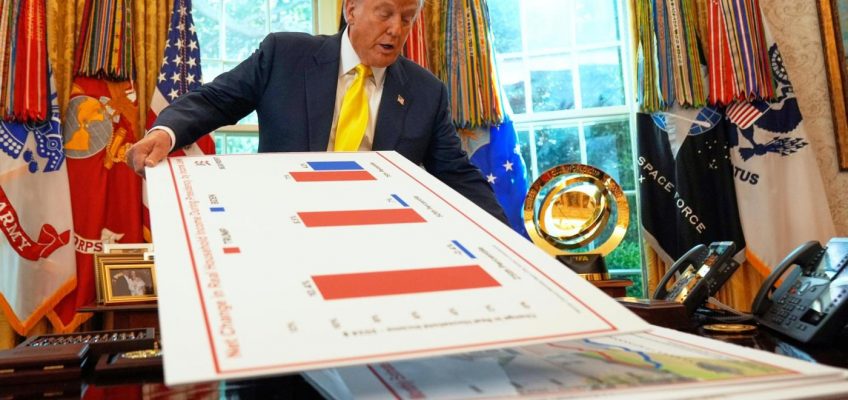By PAUL WISEMAN, Associated Press Economics Writer
WASHINGTON (AP) — The U.S. economy rebounded this spring from a first-quarter downturn caused by fallout from President Donald Trump’s trade wars.
In an upgrade from its first estimate, the Commerce Department said Thursday that U.S. gross domestic product — the nation’s output of goods and services — expanded at a 3.3% annual pace from April through June after shrinking 0.5% in the first three months of 2025. The department had initially estimated second-quarter growth at 3%.
Related Articles
Rwanda says 7 deportees arrived from the US in August under agreement with Washington
Today in History: August 28, Emmett Till’s brutalized body found
Amish woman accused of killing her 4-year-old son by throwing him into an Ohio lake
Nvidia’s AI chip sales surged again in latest quarter, but worries about a tech bubble persist
Pro-DEI organizers fired up to maintain Target boycott as promises go unfulfilled
The first-quarter GDP drop, the first retreat of the U.S. economy in three years, was mainly caused by a surge in imports — which are subtracted from GDP — as businesses scrambled to bring in foreign goods ahead of Trump’s tariffs. That trend reversed as expected in the second quarter: Imports fell at a 29.8% pace, boosting April-June growth by more than 5 percentage points.
The Commerce Department reported that consumer spending and private investment were a bit stronger in the second quarter than it had first estimated.
Consumer spending, which accounts for about 70% of GDP, grew at a 1.6% annual pace, lackluster but better than 0.5% in the first quarter and the 1.4% the government initially estimated for the second.
Even with an upward revision, private investment dropped at a 13.8% annual pace from April through June. That would be biggest drop since the second quarter of 2020 at the height of the coronavirus pandemic. A reduction in private inventories cut almost 3.3 percentage points off second-quarter GDP growth.
Spending and investment by the federal government fell at a 4.7% annual clip on top of a 4.6% drop in the first quarter.
A category within the GDP data that measures the economy’s underlying strength came in stronger than first reported, growing 1.9% from April-June, same as in the first quarter. This category includes consumer spending and private investment but excludes volatile items like exports, inventories and government spending.
Since returning to the White House, Trump has overturned decades of U.S. policy that had favored freer trade. He’s slapped double-digit taxes on imports from almost every country on earth and targeted specific products for tariffs, too, including steel, aluminum and autos.
Trump sees tariffs as a way to protect American industry, lure factories back to the United States and help pay for the massive tax cuts he signed into law July 4.
But mainstream economists — viewed with disdain by Trump and his advisers — say that his tariffs will damage the economy, raising costs and making protected U.S. companies less efficient. They note that tariffs are paid by importers in the United States, who try to pass along the cost to their customers via higher prices. Therefore, tariffs can be inflationary — though their impact so far has been modest.
The erratic way Trump has imposed the tariffs — announcing and suspending them, then coming up with new ones — has left businesses bewildered and uncertain about investments and hiring.


Leave a Reply